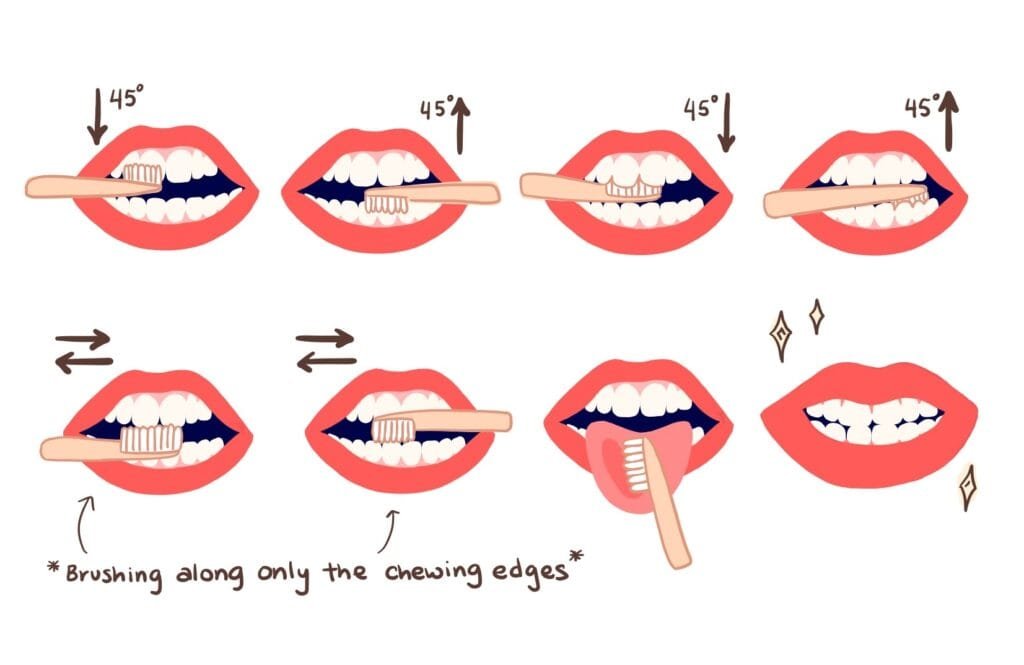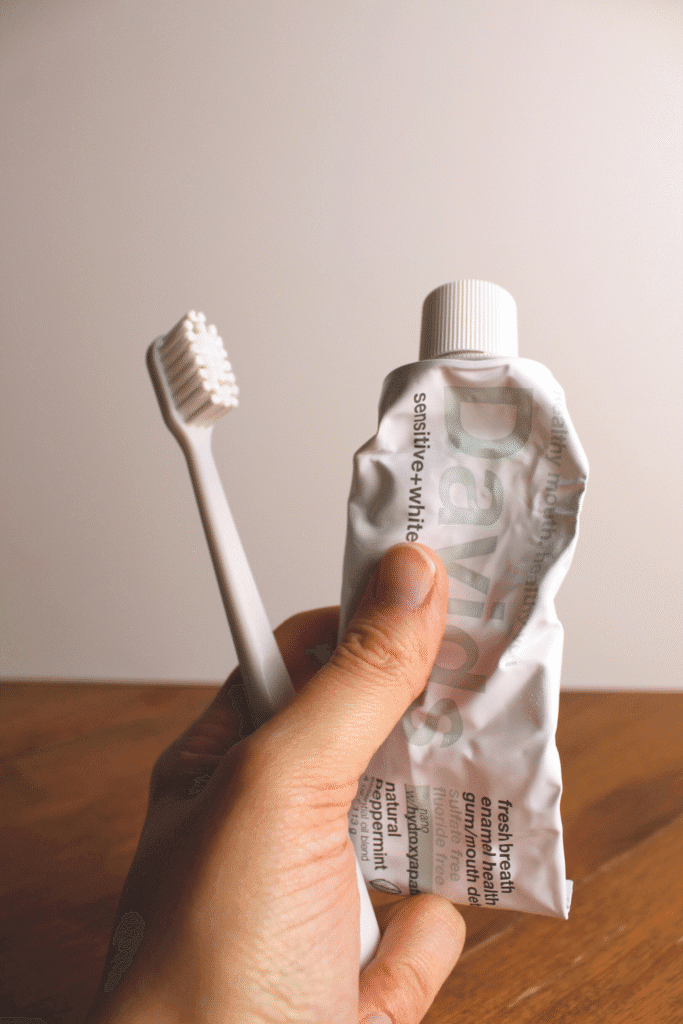ROOTED IN HEALTH: A NATURAL ORAL CARE ROUTINE
May 12, 2025
At Seattle Roots Texas Boots, we believe in doing things the right way—not the rushed way. That’s true in the garden, in the kitchen, and yes, even in the bathroom. Your oral health is about more than just a pretty smile—it’s a window into your overall wellness. And just like anything else worth doing, caring for your mouth naturally takes intention, consistency, and the right tools.
If you’ve been wanting to switch to a more natural oral care routine—one that works with your body rather than masking issues such as cavities or bad breath—this guide walks you through the exact steps. It’s simple, clean, and designed to protect your teeth and gums long-term without harsh chemicals.

Explore some of my favorite recommended products to support your health journey (displayed on this page as affiliate links), and remember to always consult a healthcare professional before making any changes to your diet or lifestyle—full medical disclaimer here.
Oral health has become an essential part of my daily routine because I’ve learned that it’s not just about a clean smile—it’s about overall wellness. Our mouths are the entry points to our bodies, and neglecting them can lead to more than just cavities. Poor oral health, like gum disease, has been linked to issues like heart disease, diabetes, and inflammation throughout the body. For me, taking care of my teeth and gums is a reflection of how I care for my entire body.
Good oral hygiene supports not only a confident smile but also a balanced, healthy body. It’s about preventing discomfort and catching potential health problems early. I’ve found that when I prioritize my oral health, I feel more grounded and energized, knowing I’m nurturing my whole self, inside and out.
Your Oral Health Routine: At a Glance
Why Floss before brushing?
Flossing before brushing helps remove plaque and food particles from between your teeth, making brushing much more effective. When you floss first, you clear the way for your toothpaste to reach more surfaces and better penetrate those hard-to-reach areas. It also helps prevent you from brushing plaque deeper into the gumline. Starting with floss gives your entire oral care routine a stronger foundation—and your teeth a more thorough clean.
Follow these simple steps twice a day for a healthier, cleaner mouth:
Floss or Use a Water Flosser: Start by removing plaque and debris from between your teeth.
Salt Water Rinse (optional): Use a gentle saltwater rinse to reduce bacteria and soothe your gums.
Brush with a Quality Toothpaste: Brush gently at a 45-degree angle with a soft brisle brush to protect your gums and enamel.
Tongue Scrape: Don’t forget your tongue—scrape away bacteria and toxins for fresher breath.
Keep reading for more tips on why these steps are important, plus additional dos and don’ts to keep your oral health on track!
1. Start With Flossing or a Water flosser
It all starts with the spaces between your teeth. Brushing alone can’t reach everything—no matter how long you go at it. That’s where flossing comes in.
Daily flossing removes food particles, plaque, and bacteria from between the teeth and below the gum line—places your toothbrush just can’t reach. If traditional floss isn’t your thing or you have sensitive gums, a Waterpik or other water flosser is a great alternative. It uses a pressurized stream of water to flush out buildup without being rough. This is the water flosser I prefer to use.
A water flosser can’t completely replace traditional flossing. While it’s excellent for flushing out debris and reaching areas that are hard to access with regular floss, it may not remove as much plaque buildup along the gumline as traditional flossing does. For the best results, it’s ideal to use both—a water flosser to clean and freshen, and traditional floss to ensure thorough plaque removal between teeth.
You don’t have to be aggressive here. Just take your time and gently move between each tooth, curving the floss in a C-shape along the gum line. If you’re using a Waterpik, go slow and steady—it’s surprisingly satisfying once you get the hang of it.
2. Do a Salt Water Rinse Instead of Mouthwash (optional)
After flossing, many people reach for a brightly-colored mouthwash full of alcohol and artificial flavors. But if your goal is to support your oral microbiome—not kill it off—salt water is your best friend.
A warm salt water rinse is an ancient, effective method for cleansing the mouth. It helps reduce inflammation, supports healing if you’ve been dealing with bleeding gums or sores, and gently eliminates unwanted bacteria without destroying the good stuff your mouth needs to stay balanced.
All you need is 1/2 teaspoon of sea salt dissolved in a small glass of warm water. Swish it around for about 30 seconds, then spit it out. No stinging, no overpowering fake mint flavor—just a clean, fresh mouth the natural way.
Skip the Mouthwash
Traditional mouthwash is full of alcohol, artificial dyes, preservatives, and antibacterial agents that wipe out the entire oral microbiome. That may sound good in theory, but just like your gut, your mouth needs good bacteria to stay healthy. Over time, frequent use of chemical mouthwashes can lead to dry mouth, increased cavities, and even imbalances in your body’s natural immune response.

3. How to Brush the Right Way
Picking the right toothpaste is key to maintaining oral health. Many conventional toothpastes contain harsh chemicals and abrasives that can damage enamel. Opt for natural, fluoride-free options that support enamel remineralization, like those with nano-hydroxyapatite (nHA). To learn more about choosing the best toothpaste, check out this article.
Technique matters. If you’ve never been told how to properly brush, don’t worry—you’re not alone. Most of us learned by watching someone else or doing what felt right. But brushing incorrectly can actually cause gum recession, enamel wear, and more.
Here’s how to do it right:
Hold your brush at a 45-degree angle from your gum line.
Start at gum line and brush way at the 45-degree angle—brushing into the gum line can cause damage over time.
Once you get good at this it will feel like a circular motion, avoid going back-and-forth in a sawing motion.
Don’t forget the backs of your teeth and the back sides of your molars—those spots often get skipped and can be prone to buildup.
Brush for a full two minutes. It helps to hum a song, set a timer, or use a toothbrush with a built-in timer if needed.
Use a soft-bristled toothbrush (manual or electric). Anything stiff is too harsh for your gums and enamel.
Do This Twice a Day, Every Day
Consistency is the secret ingredient here. Like anything that’s good for you, it only works if you stick with it. Doing this full routine in the morning and evening will set the stage for strong teeth, healthy gums, and fresher breath naturally.
And on days where time is tight? Do what you can. Even a simplified version (floss, rinse, brush, scrape) is far better than nothing.
5. Scrape Your Tongue
If you’re not scraping your tongue each morning and evening, you’re missing one of the easiest (and most satisfying) steps in natural oral care. Tongue scraping removes the layer of bacteria and toxins that builds up overnight and throughout the day, especially if you eat a lot of carbs or dairy.
A stainless steel tongue scraper is inexpensive and will last forever. Just gently drag it from the back of your tongue to the front a few times, rinse it off, and go on with your day. You’ll notice fresher breath almost instantly—and you won’t believe what comes off your tongue the first time you do it.
Dont Rinse After Brushing
It might feel natural to rinse your mouth with water after brushing, but doing so actually washes away the beneficial ingredients in your toothpaste—especially if you’re using one with nano-hydroxyapatite or fluoride. Leaving a thin layer of toothpaste on your teeth allows it to keep working, strengthening enamel and protecting against decay even after you’ve finished brushing. Just spit, don’t rinse!

Bonus Boosts for Natural Oral Health
Oral health doesn’t end with brushing. To keep your mouth feeling fresh and healthy throughout the day, consider incorporating a few simple, natural habits that support your overall oral hygiene.
Herbal Mint Tea
Sipping on herbal mint tea, such as spearmint or peppermint, is a gentle way to freshen your breath and reduce bacteria. Mint tea also helps stimulate saliva flow, which is your mouth’s natural defense against harmful bacteria. Unlike sugary drinks or acidic teas, mint tea is alkaline and soothing, making it a great choice to replace coffee or soda—both of which can damage enamel and dry out your mouth. Try enjoying a cup after meals or before bed for a refreshing boost.
Xylitol Gum
While chewing gum is often seen as a quick fix for fresh breath, traditional gum often contains artificial sweeteners and synthetic ingredients that can be harmful. On the other hand, xylitol gum—made with a natural sweetener from birch trees—offers real benefits. Xylitol helps fight harmful bacteria, balance your mouth’s pH, and stimulate saliva production, which is crucial for maintaining healthy teeth and gums. It’s especially beneficial after meals when you can’t brush right away. Look for brands like Simply Gum or Spry that use clean ingredients—no artificial sweeteners, no fake colors, and no plastic bases.
Oil Pulling
Oil pulling is another time-tested practice that can offer additional oral health benefits. Swishing coconut oil in your mouth for 10-15 minutes can help draw out toxins, reduce plaque, and support overall gum health. It’s a simple and natural way to boost your oral routine and promote a healthier mouth.
By integrating these natural, easy-to-do habits into your daily routine, you can support your mouth’s health beyond just brushing, keeping your teeth and gums fresh and well-protected all day long.
